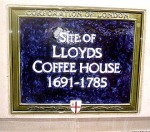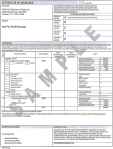Category Archives: Professional Liability
What is “professional liability”?
 Professionals, such as doctors, lawyers and accountants, along with a growing number of other occupations, work in fields that need special protection. Pharmacists, architects, engineers, opticians, beauticians, insurance agents, and various types of consultants are frequently sued due to the high standard of accountability under which they operate.
Professionals, such as doctors, lawyers and accountants, along with a growing number of other occupations, work in fields that need special protection. Pharmacists, architects, engineers, opticians, beauticians, insurance agents, and various types of consultants are frequently sued due to the high standard of accountability under which they operate.
In most instances, a type of coverage called a general or commercial general liability policy will protect a business against the damage or injury their actions may cause to others. However, this type policy is designed to handle loss associated with fairly generic and low-risk activities. Examples are customers who cut their hands on a sharp edge of an office’s reception desk or a customer who is hurt when she collides with a clerk who is stocking a shelf. Much more is at stake with professional activities. Consider several aspects that make professional liability tougher to insure:
Professional Advice – persons who need professional liability coverage are those whom the general public depend upon as experts. They provide assistance with special issues such as personal health, expensive business transactions, or personal crises. Many of these situations also involve a high-level of emotion. When something goes wrong, it is much more likely that a client will pursue “justice” through the courts.
Professional Reputation – Any claim a client makes against a professional involves that individual’s reputation. In many instances, paying a claim bears the stigma of admitting to a mistake. The professional may suffer from a lowered status and could face sanctions from related professional associations or regulatory authorities. Further, many professionals are proud of their standing and their abilities; admitting being wrong is usually fiercely resisted.
Higher Defense Costs – Defending against claims of professional error or incompetence is usually very expensive and time-consuming. Trials will usually involve expert testimony and technical arguments and the likelihood of resolving issues quickly (particularly via a settlement) is extremely low.
Identifying A Loss – The timing between when a loss occurs and when a claim or suit is filed can be a mystery. A professional may find out she’s being sued today for something that happened ten years ago. The potential for a huge time gap before a loss arises makes professional liability a very difficult type of business to underwrite and to price.
You have invested a lot in your business and your profession. It is important to be sure that you take the steps to deal with the special as well as the routine sources of loss. As usual, it is always a good idea to discuss your questions and needs with an insurance professional.
What is Lloyd’s of London?
 Lloyd’s of London is an organization that has provided insurance worldwide for more than 300 years. The organization has a reputation for handling either very expensive or exotic types of insurance. Surprisingly, Lloyd’s is neither an insurance company nor, for most of its history, a corporation. It is made up of more than 3,000 active members. There are well over 10,000 inactive members. Memberships consist of the underwriters, the insurance brokers who bring them business, and the investors known as “names.” The underwriters accept insurance business on behalf of syndicates (groups of “names”).
Lloyd’s of London is an organization that has provided insurance worldwide for more than 300 years. The organization has a reputation for handling either very expensive or exotic types of insurance. Surprisingly, Lloyd’s is neither an insurance company nor, for most of its history, a corporation. It is made up of more than 3,000 active members. There are well over 10,000 inactive members. Memberships consist of the underwriters, the insurance brokers who bring them business, and the investors known as “names.” The underwriters accept insurance business on behalf of syndicates (groups of “names”).
The history of Lloyd’s begins at Edward Lloyd’s coffeehouse in 1688, where he attracted a clientele of merchants, particularly ship owners with vessels and cargoes needing protection. Mr. Lloyd’s establishment quickly evolved into a meeting place where businessmen sought brokers to place insurance with wealthy, reputable men. Character and integrity were important because the persons (called underwriters) who agreed to invest in the ships and cargoes put their personal fortunes at risk in order to pay their share of any claim. If a ship’s voyage was successful, the underwriter would share in the profits.
Note: The term underwriter came from the practice of persons agreeing to insure a ship and/or its cargo by placing his signature under the name of the vessel he was willing to sponsor.
Lloyd’s of London has long been identified with British history and the growth of worldwide commerce. It is an international insurance market, located in London, whose members cooperate with each other, compete with each other and, of course, compete against other insurance organizations. There are four major markets at Lloyd’s: Marine, Non-Marine, Aviation and Motor. Lloyd’s also has a smaller market that handles short and long term life insurance.
Insurance is not placed with the Corporation of Lloyd’s, a society incorporated under Act of Parliament of 1871. The Corporation provides the premises, shipping information services, administrative staff and other facilities that enable the Lloyd’s market to transact insurance business. The actual insurance transactions are handled by thousands of Lloyd’s members. About one-third of the membership is actively engaged in the market. The remaining members provide capital, but do not actively place business in any of Lloyd’s insurance markets. Only the underwriting members may accept insurance business on behalf of a syndicate.
Historically, a policyholder with a valid claim could be certain that the claim would be paid, whatever the cost to the member who accepted the risk. Formerly, every underwriting member was responsible up to the full extent of his personal assets for his share business. If his personal assets were not enough, Lloyd’s would make any deficit out of its reserve funds.
Today, Lloyd’s liability is more conventional, limited in the same manner as traditional insurance companies. The change was necessary due to its long-term problem in handling losses associated with asbestos claims. Lloyd’s created a separate entity to handle that large source of loss and many organization members became inactive (no longer writing new business) in order to meet their payment obligations.
While the number of active memberships have substantially decreased; they are made up of, primarily, corporate entities, so Lloyd’s capacity to write business in the global marketplace is still substantial and makes it likely that Lloyd’s will continue to be an important part of the insurance market.
Certificates of Insurance
 Business transactions frequently require the valuable protection provided by insurance. A Certificate of Insurance is a document that is often requested as proof that adequate insurance exists. A certificate is not the same as a policy and certificates do not affect the coverage provided by a particular insurance policy. Therefore, requests to “endorse the certificate of insurance” are inappropriate and misleading. A certificate is a separate document that is used to comply with a common contract requirement to verify certain types and amounts of insurance.
Business transactions frequently require the valuable protection provided by insurance. A Certificate of Insurance is a document that is often requested as proof that adequate insurance exists. A certificate is not the same as a policy and certificates do not affect the coverage provided by a particular insurance policy. Therefore, requests to “endorse the certificate of insurance” are inappropriate and misleading. A certificate is a separate document that is used to comply with a common contract requirement to verify certain types and amounts of insurance.
Certificate holders, the entity or party requiring the certificate, often demand that they appear as “additional insureds.” This requires an endorsement (change) to the policy and it gives them coverage for injury or damage resulting from the contract.
Example: Tenant A leases a building from Property Owner B. Property Owner B demands that the tenant changes its insurance policy to also show the property owner as an additional insured. If a tenant’s customer is injured on the premises and sues both the property owner and the tenant, the tenant’s liability policy would provide coverage for both parties.
Construction contracts require certain forms of insurance, certain insurance limits, a hold harmless agreement and the inclusion on insurance policies as additional insureds. A “hold harmless” agreement is a contract provision that states how much responsibility each party accepts for damages arising out of the agreement.
A certificate of insurance can confirm that the appropriate policies were issued and that other requirements were also met. It is important to have a system for monitoring receipt of certificates BEFORE any sub-contractors are allowed to begin work. If certificates are not obtained or kept up-to-date, when the contractor’s Workers Compensation and General Liability policies are audited, the payroll for the sub-contractors without Certificates will be included with the contractor’s resulting in an additional premium charge.
Ask your insurance agent to help determine if you should be obtaining or providing certificates of insurance in conjunction with your business. In addition, when you’re required to provide a Certificate, send your agent a copy of the contract. The contract allows the agent to assist you in determining what liabilities you are accepting and what can be done to modify your insurance program to best protect your financial well-being.

